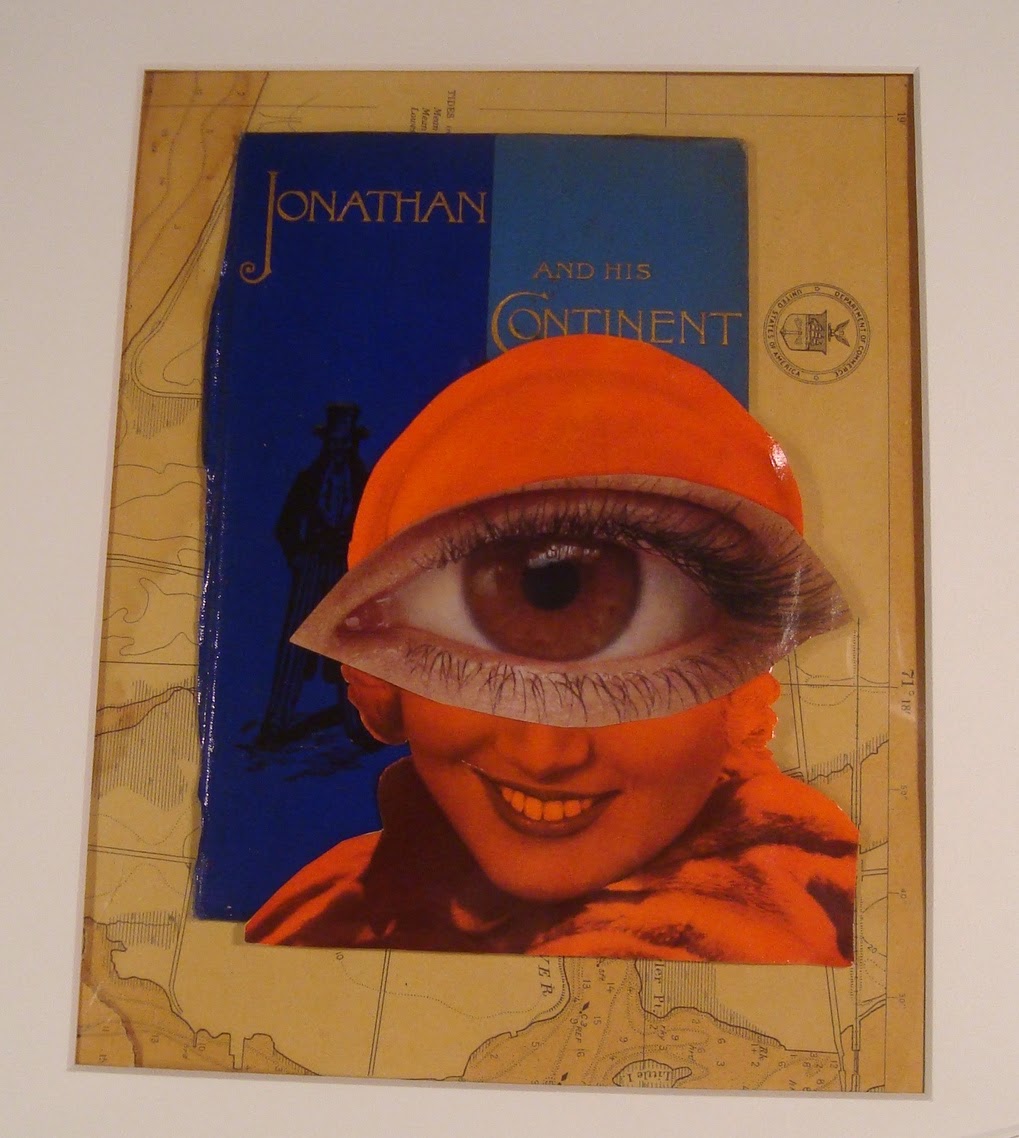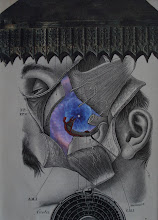This is not the first post in which I have written about synchronicity (and I suspect it won't be the last). I was having fun last night in my studio area working on some collage sketches, and created two which I think I will pursue. One of the sketches involves cropping as an "element" in a way. I have a beautiful photo of craters on the moon (I believe from Life magazine) with the quote "We is down among them, Charlie". I have had this image for a while as it strikes me as particularly aesthetic partly because of its beautiful patina. When I was playing with different elements to place on this image, I realized that I could crop the quote to leave only "them, Charlie'". I found this to be particularly intriguing in its decontextualized form. The image of the child is from a 1964 "Encyclopedia of Photography" source. I usually try to match the grey patinas of various elements within a composition to create a seamless image. But in this case, the patina of the craters and the boy produce an interesting contrast methinks. I need to look at this piece more before I decide whether I like it enough to finalize the piece.
The second sketch (with the eye) is a bit of an unusual composition for me as I was experimenting with an open mind. I would like to create a piece to give as a gift to Jonathan Talbot (hmm, I wonder if he reads this blog) and have a great substrate piece that was a book cover with the beginning of the title being "Jonathan and his Continent". I was playing with additional elements and decided that I kind of like the "big eye" image in this context. Of course, whenever I see a single "big eye" I am reminded of works by Odilon Redon. So here's where the synchronicity comes in. I am currently working on a paper presentation about the salience of psychosexuality in the creative works of Joseph Cornell. I am reading Lindsay Blair's book entitled "Joseph Cornell's Vision of Spiritual Order". The book has many images of Cornell's various collages and assemblages but only a few of other artists' works. One of these other works which I happened to come across just this morning was the Lithograph of Redon's shown below. Blair writes of the importance of "chance connections" for Cornell: "Synchronicity is seen as a signal, a guide to be trusted. All manner of unlikely relationships are thus established". But since I feel like my own life is flooded with synchronicities, I was particularly interested in Blair's follow-up statements: "Even so, they [synchronicities] are not thought of as fate or as coincidence, which are seen as outside agencies, but as quite the opposite -- the mind as director, albeit at times the unwitting director of association. Cornell developed strategies to encourage his mind to make connections, to be in a state of readiness, of receptivity" (pp. 143-144). This is the best explanation for the apparent flood of synchronicities in my life.
Subscribe to:
Post Comments (Atom)














Hmmmm....much to ponder.
ReplyDelete